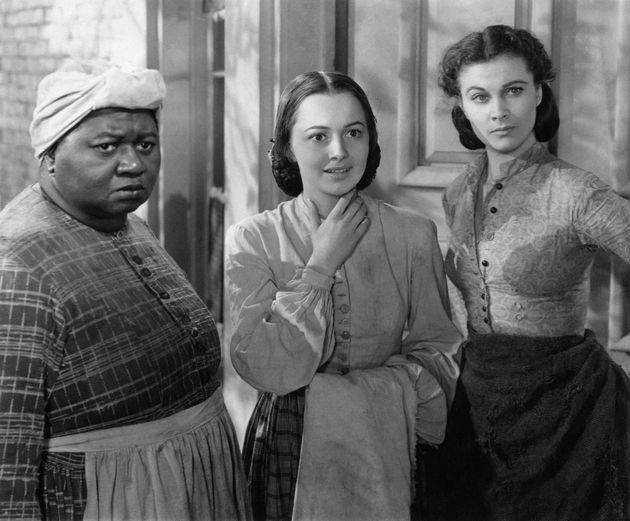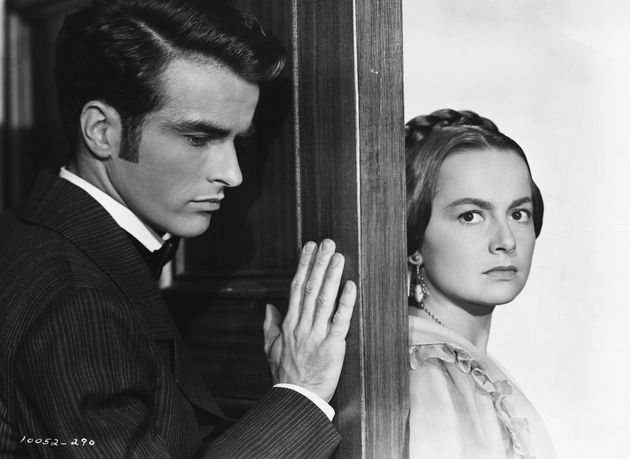Olivia de Havilland, one of the last remaining stars of Hollywood’s golden age and the oldest living Academy Award winner, died of natural causes on Sunday at her home in Paris. She was 104.
Her publicist Lisa Goldberg confirmed the news to The Hollywood Reporter.
Gracing the silver screen in both big and small roles, in a career stretching over 50 years, de Havilland was perhaps best known for her performance as Melanie Hamilton in “Gone with the Wind,” and for making multiple films with Errol Flynn. She won the Academy Award for Best Actress twice, for “To Each His Own” in 1946 and for “The Heiress” in 1949.
She is also forever enshrined in the history of workplace law, scoring a major legal victory over the Hollywood studio system in 1944 that became informally known as “the de Havilland law.” Her lawsuit against Warner Brothers resulted in California state regulations that limited the extent to which artists could be bound to contracts. It catalysed the eventual end of the powerful studio system, which often constrained actors’ career opportunities.

De Havilland had a lifelong personal and professional rivalry with her younger sister, Joan Fontaine, which became a major part of her star persona and the stuff of Hollywood legend. The two actors ― the only pair of siblings to win Oscars in a lead acting category ― clashed over everything from their careers, to their romances, to their mother’s funeral.
Fontaine, who died in 2013, said de Havilland resented sharing the spotlight and began antagonising her younger sibling as soon as she was born.
“I remember not one act of kindness from Olivia all through my childhood,” Fontaine said in a 1978 interview with People magazine.
Both were nominated for the Best Actress Oscar in 1941 ― Fontaine for Alfred Hitchcock’s “Suspicion” and de Havilland for “Hold Back the Dawn.” They were sitting at the same table when Fontaine was announced the winner.
“I stared across the table, where Olivia was sitting directly opposite me. ‘Get up there, get up there,’ Olivia whispered commandingly. Now what had I done?” Fontaine later recalled in her memoir. “All the animus we’d felt toward each other as children, the hair-pullings, the savage wrestling watches, the time Olivia fractured my collarbone, all came rushing back in kaleidoscopic imagery. My paralysis was total.”
Unlike her sister, de Havilland rarely spoke about the feud. But in an interview with The Associated Press for her 100th birthday in 2016, she referred to Fontaine as “Dragon Lady” and described their relationship as “multi-faceted, varying from endearing to alienating.”
“On my part, it was always loving, but sometimes estranged and, in the later years, severed,” de Havilland said. “Dragon Lady, as I eventually decided to call her, was a brilliant, multi-talented person, but with an astigmatism in her perception of people and events which often caused her to react in an unfair and even injurious way.”

De Havilland was born in Tokyo on July 1, 1916, to British parents. She grew up in California, where she and Fontaine, a year and a half younger, were raised primarily by her mother, a former theatre actor.
As a teenager, she began performing in community theatre productions and gave up a college scholarship when she landed a role in a production of William Shakespeare’s “A Midsummer Night’s Dream” at the Hollywood Bowl. She reprised the role in Warner Brothers’ movie adaptation in 1935, which launched her film career.
“It was an illustrious beginning,” she told Entertainment Weekly in 2015.
The studio paired her with Flynn, who ended up being her co-star in a total of eight feature films. Their onscreen chemistry spurred rumours of a real-life romance, but de Havilland repeatedly denied it. Later in life, she admitted to having feelings for Flynn, saying that their last film together felt like a “loss.”
“I experienced a sense of grief and loss, a terrible feeling, but couldn’t define it at the time. I had sort of a sense of that you may know a person one way but not others. Errol and I were not sharing experiences and life but instead sharing the lives of these characters we were playing,” she recalled in a 2006 interview. “But, oh, he did mean a great deal to me, but in that day, a woman did not declare her feelings for a man.”
After the success of “Gone with the Wind,” de Havilland’s career continued to soar. In addition to winning two Oscars for Best Actress, she also received nominations for “Hold Back The Dawn” and “The Snake Pit.” In the latter film, released in 1948, de Havilland played a woman living in a psychiatric hospital after experiencing a mental breakdown. The movie’s realism inspired states to reform conditions in mental institutions.
De Havilland grew tired of the film industry and her celebrity by the 1950s. She moved to Paris, where she would remain for the rest of her life, taking fewer acting roles and preferring reality over the artifice of Hollywood.
“I loved being around real buildings, real castles, real churches—not ones made of canvas,” she told Vanity Fair in 2015. “There were real cobblestones. Somehow the cobblestones amazed me. When I would meet a prince or a duke, he was a real prince, a real duke.”

Later films included “Light in the Piazza” (1962) and “Hush…Hush, Sweet Charlotte” (1964), co-starring her friend Bette Davis. She also returned to theatre and appeared on numerous TV shows, including the NBC miniseries “Anastasia: The Mystery of Anna,” for which she received an Emmy nomination in 1987.
As de Havilland got older, her deteriorating vision and hearing forced her to conduct interviews over email. Even in writing, though, she maintained her charm and wit and was candid about her career, including her experiences with sexism in Hollywood ― “a fact of life I simply had to accept,” she said in 2016.
“Men felt threatened and mistrustful of women who had good ideas, and one had to employ immense tact when dealing with directors and producers,” she said.
Men felt threatened and mistrustful of women who had good ideas, and one had to employ immense tact when dealing with directors and producers.Olivia de Havilland
In 1965, she became the first woman to serve as president of the Cannes Film Festival’s jury. The French government appointed her a chevalier of its Legion of Honor in 2010.
U.S. President George W. Bush awarded her the National Medal of the Arts in 2008 “for her persuasive and compelling skill as an actor in roles from Shakespeare’s Hermia to Margaret Mitchell’s Melanie. Her independence, integrity, and grace won creative freedom for herself and her fellow film actors.”
Although de Havilland retired from acting in 1988, she still made occasional public appearances to commemorate her films and career. As one of the only surviving stars of “Gone with the Wind,” she often attended anniversary celebrations of the classic film.
She was met with a standing ovation when she introduced a presentation of previous Oscar winners at the 75th anniversary of the Academy Awards in 2003.
“There have also been tributes and similar occasions that have called me back to Hollywood,” she said in 2015. “I’ve returned so often, I almost feel that I’ve never left.”
Before she turned 100, she said that she hoped to live to 110. She remained in good health in her later years, regularly taking the stairs at her home in Paris and doing The New York Times crossword puzzle.
At the peak of her stardom, de Havilland had several famous Hollywood romances, including with business mogul Howard Hughes, actor Jimmy Stewart and director John Huston. She married and divorced twice, first to American screenwriter and novelist Marcus Aurelius Goodrich. Their son, Benjamin, died of Hodgkin’s lymphoma in 1991.
She is survived by her daughter, Gisele, from her second marriage to French journalist Pierre Galante.